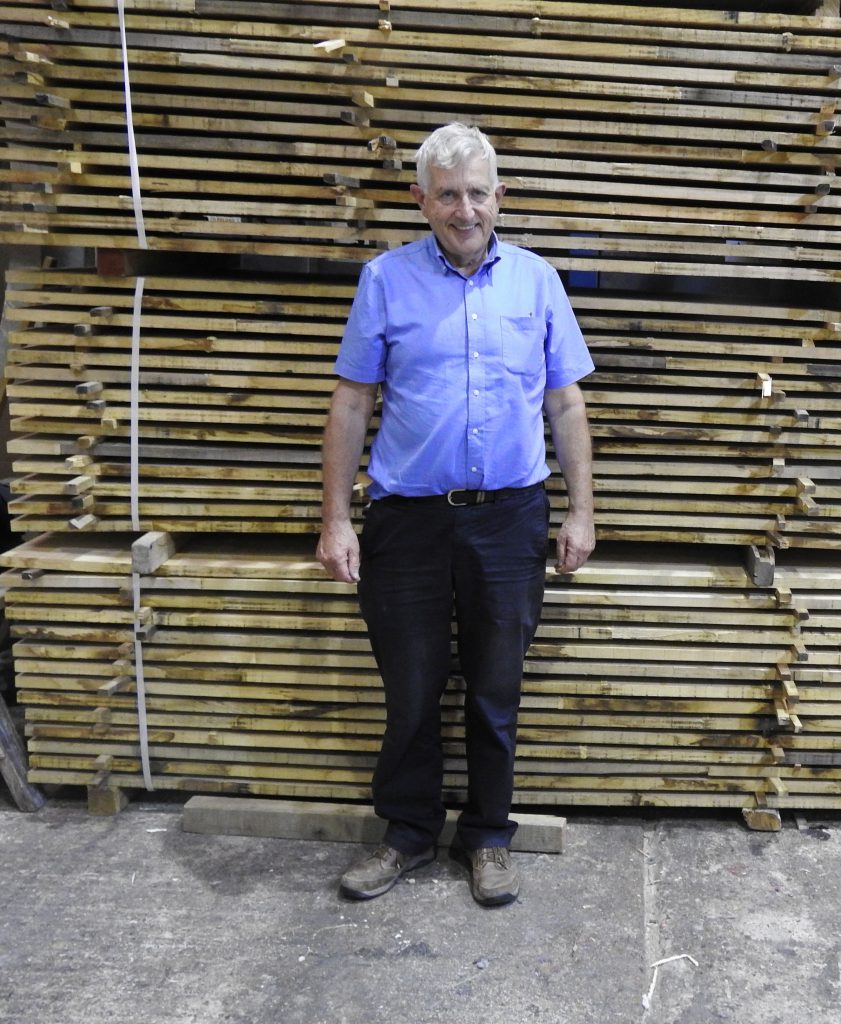Construction of the new Discovery Centre at Rye Harbour is progressing. Inwood is the company supplying the timber frame building and sweet chestnut cladding for the Centre, under construction by Baxall
Emma Chaplin from Sussex Wildlife Trust speaks to Inwood Director Nigel Braden
Tell us a bit about Inwood
I set up the company in 1999. I employ 10-12 people here at our workshop at Whitesmith near Lewes, including my son Laurence (Production and On-site Manager – we’ve worked together for 15 years now), plus we use an on-site gang of specialists for putting up the buildings.

Inwood is known for timber buildings, from the Scottish Parliament to the visitor centre at Winchester Cathedral. We’ve won The Wood Awards a number of times.
What’s your background?
I’ve run timber companies for 30 years and also an architecture practice.
What appealed to you about the Discovery Centre project?
I was interested in working with Sussex Wildlife Trust. Your work is really important. I’m a member and I’ve got my own wildlife garden – including a kestrel box I’ve had for 20 years, with new kestrels reared each year. I support the idea of using locally sourced, sustainable wood in sweet chestnut. Coppicing has a positive impact on the ecology of the woods we’ve taken it from (Maplehurst Wood near Hastings).
What qualities does sweet chestnut have?
It’s sustainable, it grows quickly and it’s naturally durable. By processing the way we do, ‘finger jointing’, we make it usable, because we end up with longer lengths with no defects. This is a process I developed to enable sweet chestnut to be used in construction. It has its own peculiarities. Tannin runs out, so a white render can become tea-coloured.
We are the only firm in the UK finger-jointing sweet chestnut. This means making long timber lengths from small sections – resulting in long length boards for cladding and lamination. We also have a new specialist (seven-axis CNC) machine, which creates dovetail housing joints for the panel construction. This makes it very strong and secure.
Give me some Discovery Centre stats
We’ve made, or are in the process of making, 53 internal panels, 30 external panels and 32 roof panels. There will be six lorry loads of processed wood travelling to Rye Harbour Nature Reserve
Over the past two years, coppiced sweet chestnut has been cut, air dried and kiln finished (using biomass energy). It is then sent to a sawmill in the Midlands, before coming back here to be processed into cladding boards for the walls.
As of now (early August 2019), the specialist timber team is on-site at Rye Harbour, staying at the caravan park there, which is handy. We’re just finishing here at Whitesmith. Weather conditions permitting, there is three weeks’ work building the structure at Rye Harbour, then three more weeks on the cladding.
We’ve used about a quarter of coppiced sweet chestnut in a 100-acre wood.
What do you expect the biggest challenges with the Discovery Centre to be?
We are used to challenging sites. But mostly, the wind and other climatic conditions. My team is very experienced and careful. And since everything is prefabricated, there’s a minimum amount of work that needs doing on site.
What will happen to the cladding over time?
It will go grey, but how fast depends on where it is – so in the case of Rye Harbour, very quickly, what with the sun, rain, wind and sand.
Anyone interested in learning more about the Discovery Centre can request a monthly newsletter to keep them posted about sightings of some of the outstanding wildlife at the reserve, news of upcoming events to support the Discovery Centre and ways to donate to the Appeal.
Image Credits: Baxall , Emma Chaplin .



